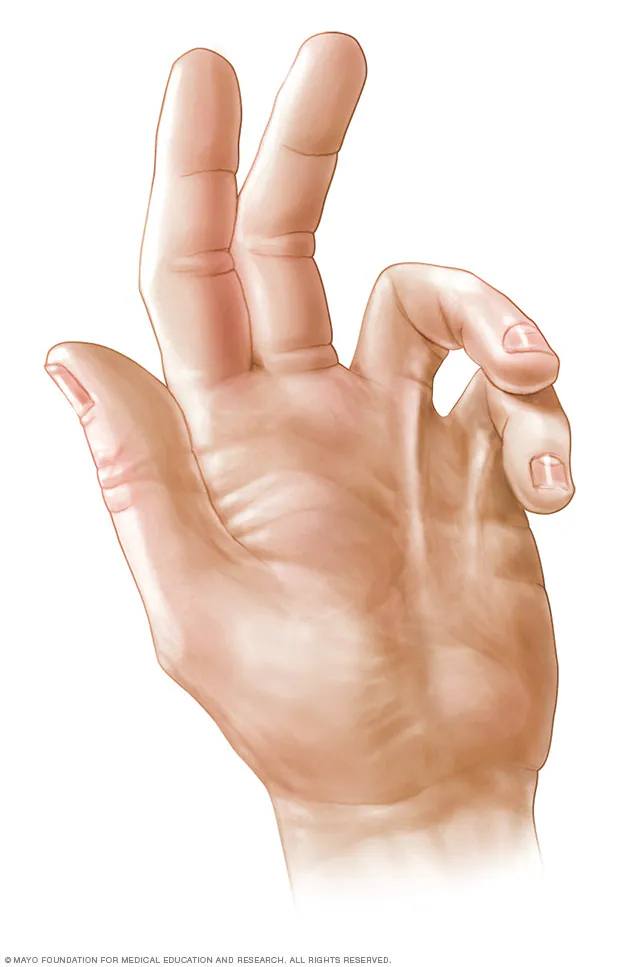Dupuytren (DOO-puh-tren) contracture is a disorder that can cause the fingers to curl in, primarily the ring and small fingers.
It’s a genetic condition mostly affecting men over 60 of Northern European descent. Others at risk include people with diabetes and those with a family history of the condition.
Dr. Shelley Noland, a Mayo Clinic hand and peripheral nerve surgeon, says there is help for patients who suffer from this disease.
Watch: The Mayo Clinic Minute
Journalists: Broadcast-quality video pkg (1:00) is in the downloads at the end of the post. Please courtesy: “Mayo Clinic News Network.” Read the script.
“What happens in Dupuytren’s disease is the layer of fascia that is beneath the skin in the palm gets thickened and contracted,” says Dr. Noland.
That can make your fingers curl in. It’s not painful, but Dr. Noland says, “It can cause significant functional limitations because the patients are unable to fully straighten out their fingers.”

Dupuytren’s contracture is a condition that causes one or more fingers to bend toward the palm of the hand. The affected fingers can’t straighten completely. It most often affects the two fingers farthest from the thumb.
Patients with advanced disease will need an intervention to relieve the contracture. There are several treatment options. An enzyme injection is a newer, less invasive treatment.
“It actually dissolves the thickened Palmer cords and fascia allowing the fingers to straighten,” she says.
So how do you know if you need to see a specialist for your condition? Here’s a tabletop test.
As Dr. Noland explains, “Lay your hand flat on the table. If you’re able to lay it flat, then you probably won’t require any intervention. But if you’re unable to lay it flat because of the contractures in the fingers, then you would want to seek care with a hand surgeon specializing in Dupuytren’s disease.”
Related topics:
